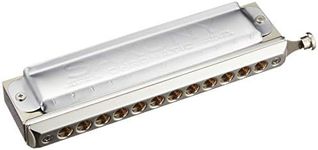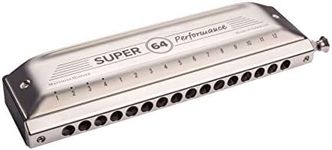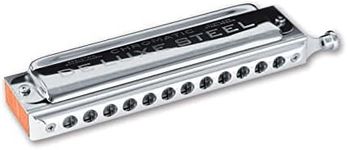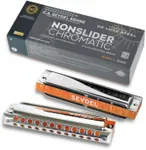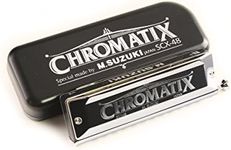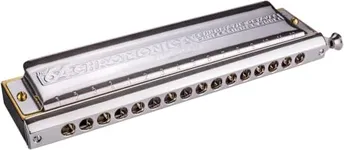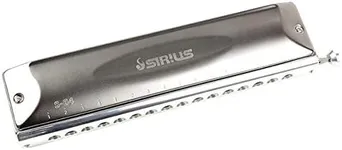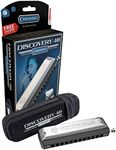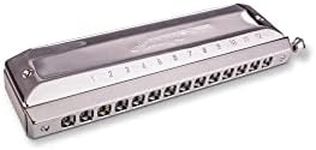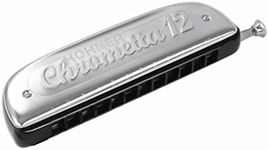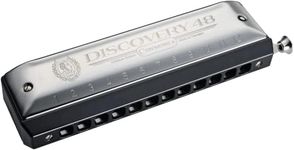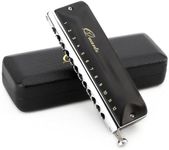Buying Guide for the Best Chromatic Harmonicas
Choosing the right chromatic harmonica can greatly enhance your musical experience, whether you're a beginner or an experienced player. Chromatic harmonicas are versatile instruments that allow you to play a wide range of notes and styles. To find the best fit for you, it's important to understand the key specifications and how they align with your needs and preferences.Number of HolesThe number of holes on a chromatic harmonica determines its range and the number of notes it can produce. Commonly, chromatic harmonicas come with 10, 12, or 16 holes. A 10-hole harmonica is more compact and easier to handle, making it suitable for beginners or those who prefer a lighter instrument. A 12-hole harmonica offers a good balance between range and size, making it a popular choice for many players. A 16-hole harmonica provides the widest range, allowing for more complex and varied music, but it can be bulkier and more challenging to play. Choose the number of holes based on your skill level and the type of music you want to play.
KeyThe key of a chromatic harmonica refers to the musical key in which it is tuned. The most common key for chromatic harmonicas is C, which is versatile and suitable for a wide range of music styles. However, chromatic harmonicas are available in other keys as well, such as G, D, and F. If you're a beginner, starting with a harmonica in the key of C is recommended, as it is the most standard and widely used. More advanced players might choose different keys to match specific musical pieces or to complement other instruments.
Slide MechanismThe slide mechanism on a chromatic harmonica allows you to access different notes by pressing a button on the side of the instrument. This feature is what sets chromatic harmonicas apart from diatonic ones. The smoothness and reliability of the slide mechanism are crucial for playing fast and accurate passages. When choosing a harmonica, look for a slide mechanism that operates smoothly and doesn't stick. Some harmonicas have a straight slide, while others have a zigzag slide. The choice between these is largely a matter of personal preference, but it's important to test the slide action to ensure it feels comfortable and responsive to you.
Reed MaterialThe reeds in a chromatic harmonica are responsible for producing sound when you blow or draw air through the instrument. Reeds can be made from different materials, such as brass, stainless steel, or phosphor bronze. Brass reeds are common and offer a warm, rich tone, but they may wear out faster. Stainless steel reeds are more durable and resistant to corrosion, providing a bright, clear sound. Phosphor bronze reeds offer a balance between durability and tonal quality. Consider the type of music you play and how often you use the harmonica when choosing the reed material. If you play frequently or in various environments, stainless steel reeds might be a better choice for their longevity.
Comb MaterialThe comb is the main body of the harmonica, where the air channels are located. Combs can be made from different materials, including plastic, wood, and metal. Plastic combs are durable, resistant to moisture, and provide a consistent sound, making them a good choice for beginners. Wooden combs offer a warm, resonant tone but can be sensitive to moisture and may require more maintenance. Metal combs are durable and provide a bright, clear sound but can be heavier. Your choice of comb material will affect the harmonica's tone, weight, and maintenance requirements. Consider your playing environment and personal preferences when selecting the comb material.
